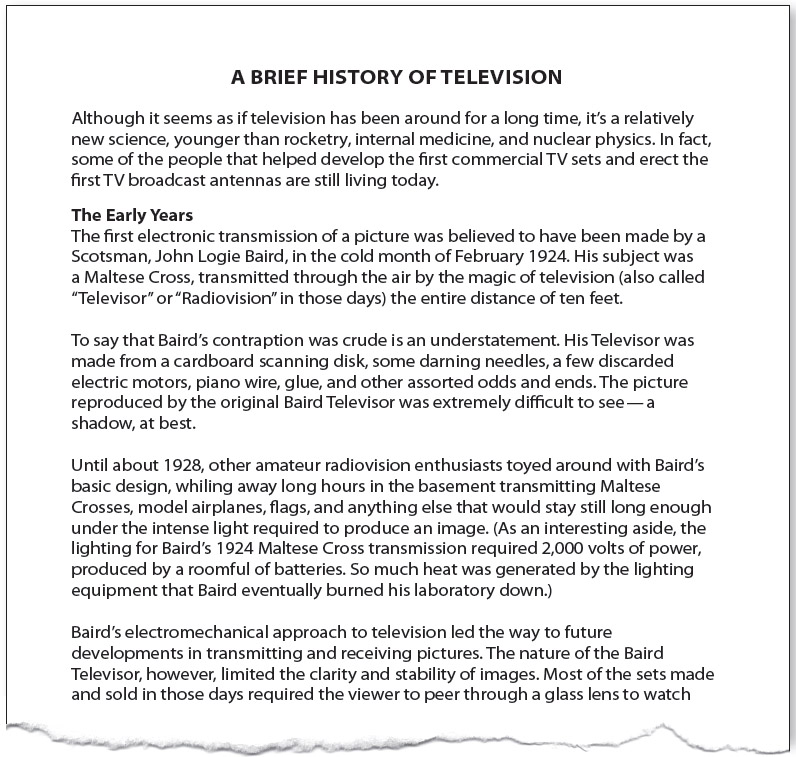Summarizing
Printed Page 610-613
Summarizing
Summarizing is the process of rewriting a passage in your own words to make it shorter while still retaining its essential message. Writers summarize to help them learn a body of information or to create a draft of one or more of the summaries that will go into the document.
Most long technical documents contain several kinds of summaries:
- a letter of transmittal that provides an overview of the document
- an abstract, a brief technical summary
- an executive summary, a brief nontechnical summary directed to the manager
- a conclusion that draws together a complicated discussion
The guidelines and examples in this section explain how to summarize the printed information you uncover in your research.
Summarizing

The following advice focuses on extracting the essence of a passage by summarizing it.
- Read the passage carefully several times.
- Underline key ideas. Look for them in the titles, headings, topic sentences, transitional paragraphs, and concluding paragraphs.
- Combine key ideas. Study what you have underlined. Paraphrase the underlined ideas. Don’t worry about your grammar, punctuation, or style at this point.
- Check your draft against the original for accuracy and emphasis. Check that you have recorded statistics and names correctly and that your version of a complicated concept faithfully represents the original. Check that you got the proportions right; if the original devotes 20 percent of its space to a particular point, your draft should not devote 5 percent or 50 percent to that point.
- Record the bibliographic information carefully. Even though a summary might contain all your own words, you still must cite your source, because the main ideas are someone else’s. If you don’t have the bibliographic information in an electronic form, put it on a note card.
Figure A.2 is a narrative history of television technology addressed to the general reader. Figure A.3 is a summary that includes the key terms. This summary is 10 percent of the length of the original.


